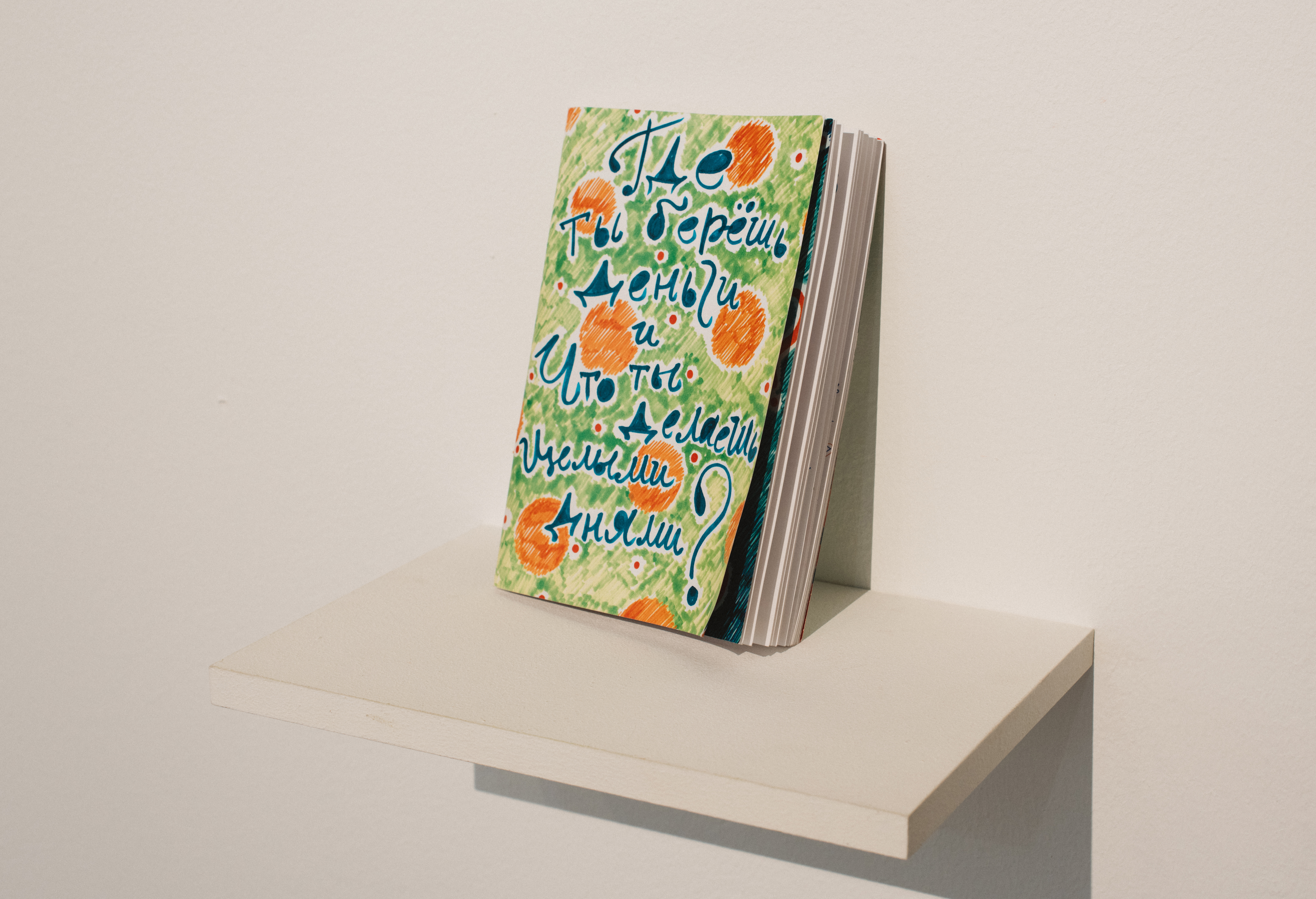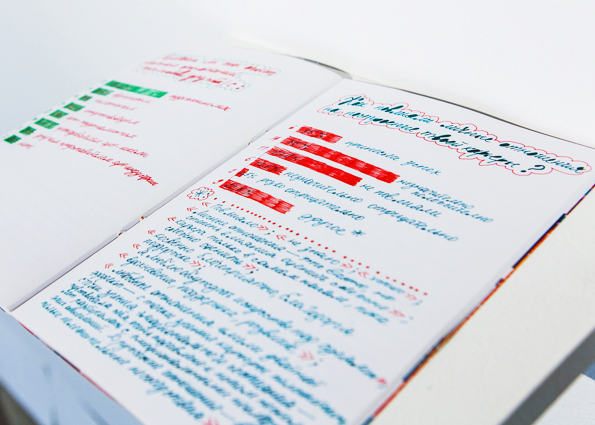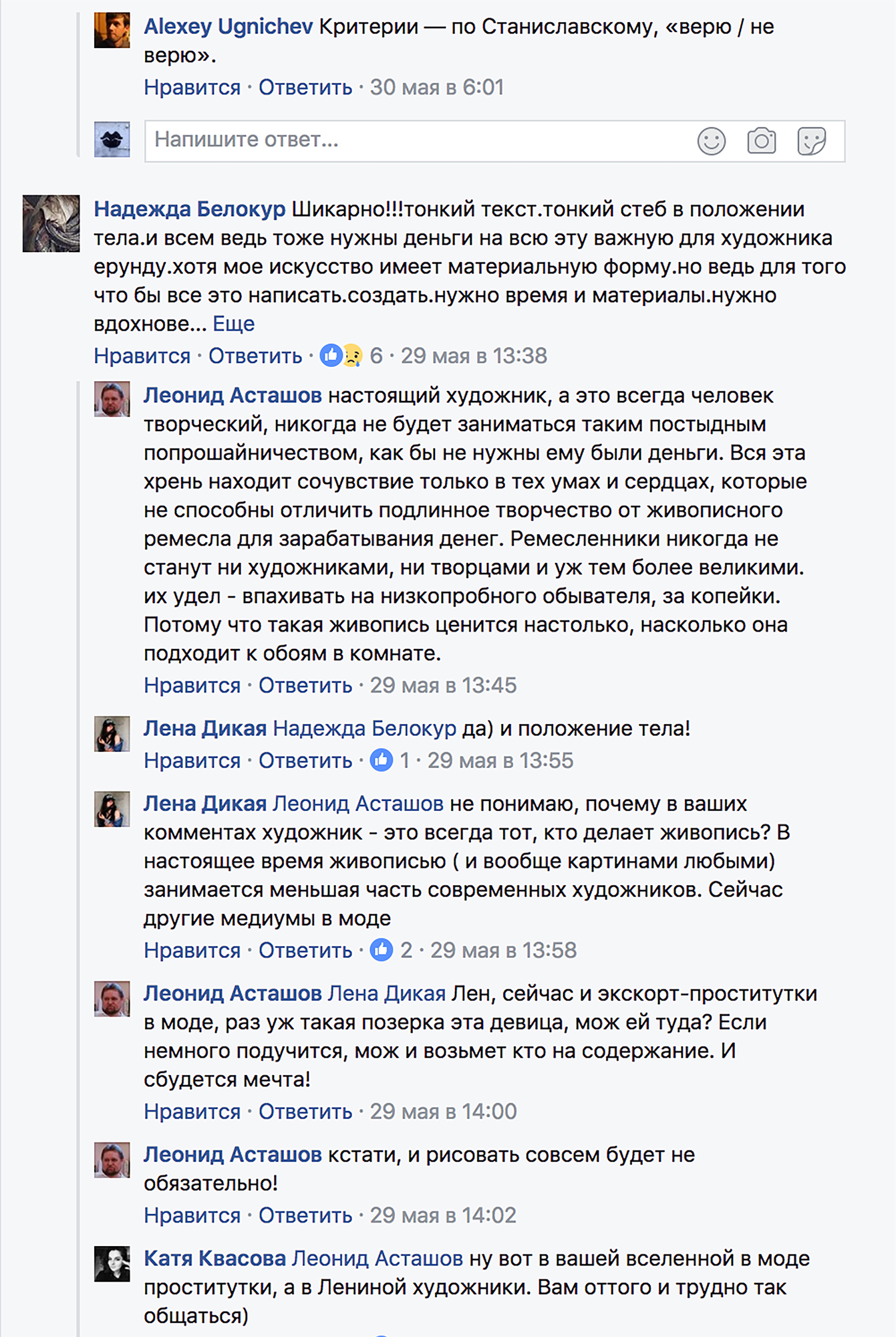Career strategies of a young female artist. Where do you get your money and what do you do all day?
The artist asks questions.*
And what about the female artist?
For my project I conducted an experimental internet survey among young female artists living in Moscow (40 people aged 18 to 37). It consisted of 25 questions and 1 image — a self-portrait of each female artist. On this occasion I have chosen survey as my artistic medium. As the prototype of this survey I used a popular practice among school kids called “A questionnaire for Friends”. It often included some pretty straightforward and shameless questions.Those questionnaires were supplemented with a variety of memory drawings, clippings, stickers and turned into an informal textual-visual work based on grassroots non-adult research. My methods were just as profane, the questions were curious and rhetorical. Just like the compilers of children’s questionnaires, I belong to a community, which I analysed, not pretending to judge from an “objective” point of view.
The subject of my research is the precarious position of a female artist who begins her career and is looking for ways to integrate into a patriarchal capitalist art system based on hierarchies. She is a subject to triple social and economic vulnerability (age, gender, profession — young female artist). What strategies of adaptation and survival do such women choose in these conditions? Who pays the bills? Different types of gender contracts (housewife/a woman sponsored by her husband or partner, etc); sponsorship by parents; a contract with a gallery or making money with alternative skills? Love and friendship also form a conflict zone — a borderline between solidarity, career gains and unwanted harassment in a professional environment. Another challenge is to combine an artist’s lifestyle with the role of the mother.
Those working in the field of creative and reproductive performance are united by social insecurity based on precarity, invisibility and the image of affective activity. The patriarchal gender contract depends on the mood of one’s partner, and the hired labour of a short-term worker depends on the mood of his employer and is not secured by the Labour Code, which entails irregular working hours. Neither the mother, nor the female artist, nor the housewife have a guaranteed paid holiday. Another common characteristic is invisibility of their labour because in public consciousness it is an affective activity, that is, not labour, but “creative self-realization, self-expression”; “taking care of the family is a natural form of female self-realization”. This activity is associated with vocation, pleasure from self-realization and, therefore, does not require financial compensation.
I analyse and visualise the data obtained as a result of the survey. To sum up the first part of the work (Career strategies of a young female artist, part 1: “Where do you get your money and what do you do all day?”), I chose the medium of a book, which contains illustrated data, divided into thematic blocks. I supplement them with my hypothesis and several points about the appropriateness of the questions. The language of quantitative research (numbers, charts, diagrams) is a pragmatic one. The artistic activity, however, calls into question the pragmatic logic both by the process of creation and its results. The visual qualities of the project are defined by this conflict.
In the future the data collected will be used to create a computer game/app (Career strategies for a young female artist, part 2). In it the identity of a female artist as a “tamagotchi” constitutes a fragile organism, which faces many obstacles (motherhood? death? madness? prostitution? hunger? success? failure?). What are the conditions for the vitality of a female artist’s identity? How oppressed is her personality and how affected are transgressive practices by the institutions of marriage, education, or parental care? How unproductive is the state of “stability” for the creative process? The images given by female artists will be used as the prototypes for creating characters of the game/app. I see an important and peculiar connection between the career strategies of female artists and their social self-representation. What is the importance of provocation in creating one’s image? How do female artists make use of sexuality in their style? Does sexual objectification hinder or facilitate professional success? At the end of the survey, I have even more questions which need answers.
For me personally, creative work is impossible without aimless pastime, but its opportunity is limited by money. I need money so that I can surf the internet, wander around the city, take a bath, pick my nose, suffer and reflect; to have an opportunity not to waste time looking for a job or going to work; asking my partner or my parents for money. I believe that laziness and contemplation are very important components of the invisible “artist’s labour” and, like the work of a housewife or maternal work, deserve payment and respect. However, who can give you this “right to be lazy” and, most importantly, financial resources for that? A desire to find an answer to this question inspired me to use video-messages as a medium for crowdfunding.
* it is a reference to a common expression “the mission of an artist is to ask questions”, which by default implies a male artist.
*Распространенное мнение
︎︎︎ книга
︎︎︎ видео
︎︎︎ стенгазета


︎︎︎ video



